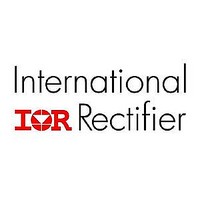iru3011 International Rectifier Corp., iru3011 Datasheet - Page 8

iru3011
Manufacturer Part Number
iru3011
Description
5-bit Programmable Synchronous Buck Controller Ic -
Manufacturer
International Rectifier Corp.
Datasheet
1.IRU3011.pdf
(13 pages)
Available stocks
Company
Part Number
Manufacturer
Quantity
Price
Part Number:
iru3011CW
Manufacturer:
IR
Quantity:
20 000
IRU3011
APPLICATION INFORMATION
An example of how to calculate the components for the
application circuit is given below.
Assuming, two sets of output conditions that this regu-
lator must meet,
the regulator design will be done such that it meets the
worst case requirement of each condition.
Output Capacitor Selection
The first step is to select the output capacitor. This is
done primarily by selecting the maximum ESR value
that meets the transient voltage budget of the total DVo
specification. Assuming that the regulators DC initial
accuracy plus the output ripple is 2% of the output volt-
age, then the maximum ESR of the output capacitor is
calculated as:
The Sanyo MVGX series is a good choice to achieve
both the price and performance goals. The 6MV1500GX,
1500mF, 6.3V has an ESR of less than 36mV typical.
Selecting 6 of these capacitors in parallel has an ESR
of
Other type of electrolytic capacitors from other manu-
facturers to consider are the Panasonic FA series or the
Nichicon PL series.
Reducing the Output Capacitors Using Voltage Level
Shifting Technique
The trace resistance or an external resistor from the output
of the switching regulator to the Slot 1 can be used to
the circuit advantage and possibly reduce the number of
output capacitors, by level shifting the DC regulation point
when transitioning from light load to full load and vice
versa. To accomplish this, the output of the regulator is
typically set about half the DC drop that results from
light load to full load. For example, if the total resistance
from the output capacitors to the Slot 1 and back to the
Gnd pin of the device is 5mV and if the total DI, the
change from light load to full load is 14A, then the output
voltage measured at the top of the resistor divider which
is also connected to the output capacitors in this case,
must be set at half of the 70mV or 35mV higher than the
DAC voltage setting.
8
a) Vo=2.8V, Io=14.2A, DVo=185mV, DIo=14.2A
b) Vo=2V, Io=14.2A, DVo=140mV, DIo=14.2A
ESR [
6mV which achieves our low ESR goal.
14.2
100
= 7mV
www.irf.com
This intentional voltage level shifting during the load tran-
sient eases the requirement for the output capacitor ESR
at the cost of load regulation. One can show that the
new ESR requirement eases up by half the total trace
resistance. For example, if the ESR requirement of the
output capacitors without voltage level shifting must be
7mV then after level shifting the new ESR will only need
to be 8.5mV if the trace resistance is 5mV (7 + 5/2=9.5).
However, one must be careful that the combined “volt-
age level shifting” and the transient response is still within
the maximum tolerance of the Intel specification. To in-
sure this, the maximum trace resistance must be less
than:
For example, assuming:
Then the Rs is calculated to be:
However, if a resistor of this value is used, the maximum
power dissipated in the trace (or if an external resistor is
being used) must also be considered. For example if
Rs=12.6mV, the power dissipated is:
This is a lot of power to be dissipated in a system. So, if
the Rs=5mV, then the power dissipated is about 1W
which is much more acceptable. If level shifting is not
implemented, then the maximum output capacitor ESR
was shown previously to be 7mV which translated to 6
of the 1500mF, 6MV1500GX type Sanyo capacitors. With
Rs=5mV, the maximum ESR becomes 9.5mV which is
equivalent to
is that if a trace is being used to implement the resistor,
the power dissipated by the trace increases the case
temperature of the output capacitors which could seri-
ously effect the life time of the output capacitors.
Rs [ 23(Vspec - 0.023Vo - DVo) / DI
Rs [ 23(0.140 - 0.0232 - 0.01) / 14.2 = 12.6mV
Io
Where :
Rs = Total maximum trace resistance allowed
Vspec = Intel total voltage spec
Vo = Output voltage
DVo = Output ripple voltage
DI = load current step
Vspec = 140mV = 0.1V for 2V output
Vo = 2V
DVo = assume 10mV = 0.01V
DI = 14.2A
2
3Rs = 14.2
4 caps. Another important consideration
2
312.6 = 2.54W
08/20/02
Rev. 1.6












